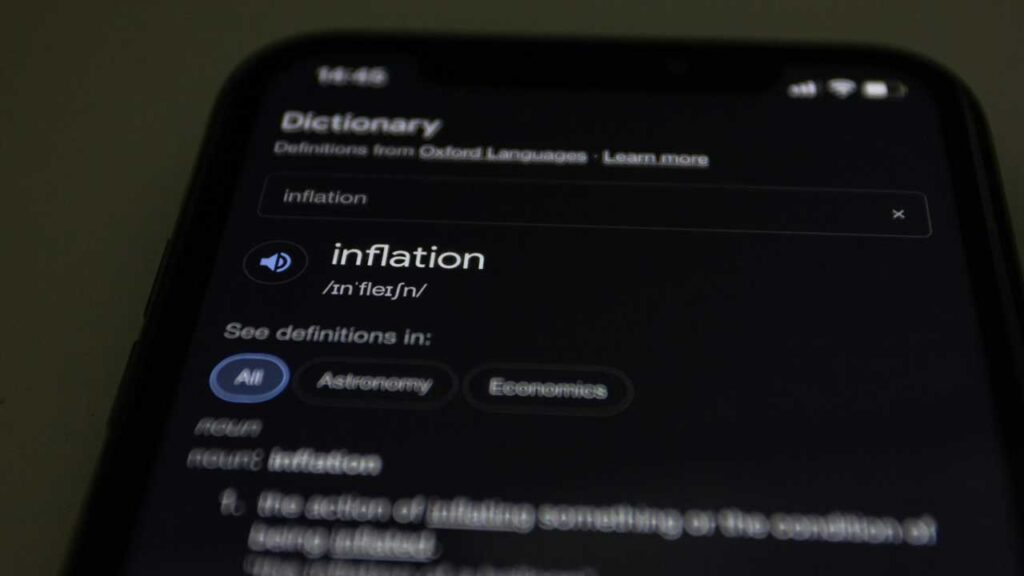Inflation is a term that frequently surfaces in discussions about economics, finance, and everyday life. It refers to the general increase in prices of goods and services over time, resulting in the decrease of purchasing power of a currency. In simpler terms, inflation means that with the same amount of money, you can buy fewer goods and services than you could in the past.
Inflation is a crucial concept in economics, as it directly impacts the cost of living, savings, investments, and the overall economy of a country. Central banks and policymakers closely monitor inflation rates to ensure economic stability.
Types of Inflation
- Demand-Pull Inflation
This type of inflation occurs when the demand for goods and services exceeds the supply. When consumers, businesses, and governments are willing to spend more, the increased demand drives prices up. For example, if a particular product becomes popular, more people want to buy it, but the supply remains the same. This leads to an increase in the product’s price. - Cost-Push Inflation
Cost-push inflation happens when the cost of production for goods and services increases. These increased costs could be due to rising wages, higher prices for raw materials, or supply chain disruptions. Businesses often pass these costs on to consumers by raising the prices of their products. An example of cost-push inflation is when the price of oil rises, leading to higher transportation costs, which in turn increases the prices of goods that rely on transportation. - Built-In Inflation
Built-in inflation, also known as wage-price inflation, occurs when workers demand higher wages to keep up with rising living costs. Businesses may respond by raising the prices of their products to cover these higher wages, which can create a cycle of rising wages and prices. This type of inflation can be challenging to control because it becomes embedded in the economy. - Hyperinflation
Hyperinflation is an extreme and rapid form of inflation, where prices increase uncontrollably and the value of money plummets. This can happen when a country experiences a severe economic crisis, such as political instability, war, or excessive printing of money. A historical example of hyperinflation occurred in Zimbabwe in the late 2000s, where the inflation rate skyrocketed, rendering the national currency nearly worthless.
Causes of Inflation
Several factors can contribute to inflation, including:
- Monetary Policy
Central banks control the money supply in an economy through monetary policy. When central banks increase the money supply, more money circulates in the economy. If this increase in money supply outpaces economic growth, it can lead to inflation. This is because more money chasing the same amount of goods and services drives prices up. - Fiscal Policy
Government spending can also contribute to inflation. When a government increases its spending without a corresponding increase in production, it can lead to demand-pull inflation. Additionally, if the government borrows heavily to finance its spending, it can drive up interest rates, leading to cost-push inflation. - External Factors
External factors, such as supply chain disruptions, natural disasters, or geopolitical events, can affect the availability of goods and services. These disruptions can lead to shortages and increased production costs, contributing to inflation. For example, the COVID-19 pandemic caused significant disruptions to global supply chains, leading to inflationary pressures in many countries. - Exchange Rates
The exchange rate of a country’s currency can also influence inflation. When a country’s currency depreciates relative to other currencies, the cost of imported goods and services rises. This can lead to higher prices for consumers and contribute to inflation. Conversely, a strong currency can reduce the cost of imports and help keep inflation in check.
Measuring Inflation
Inflation is typically measured by tracking changes in the price of a basket of goods and services over time. Two of the most common measures of inflation are:
- Consumer Price Index (CPI)
The Consumer Price Index (CPI) measures the average change in prices paid by consumers for a basket of goods and services. This basket includes items such as food, housing, transportation, healthcare, and education. The CPI is widely used to measure inflation because it reflects the prices that consumers experience in their daily lives. - Producer Price Index (PPI)
The Producer Price Index (PPI) measures the average change in prices received by producers for their goods and services. It focuses on the prices that businesses receive for their products at different stages of production. The PPI is often considered a leading indicator of inflation because changes in producer prices can eventually be passed on to consumers.
Consequences of Inflation
Inflation has both positive and negative consequences for an economy:
- Positive Effects
Moderate Inflation Encourages Spending and Investment: When inflation is moderate, it can encourage people to spend and invest rather than hoard money. If prices are expected to rise, consumers may buy goods and services sooner rather than later, boosting economic activity. Similarly, businesses may invest in new projects if they expect future returns to outpace inflation.
Debt Relief: Inflation can also reduce the real value of debt. Borrowers benefit from inflation because they can repay their loans with money that is worth less than when they originally borrowed it. - Negative Effects
Reduced Purchasing Power: One of the most significant negative impacts of inflation is the reduction in purchasing power. As prices rise, consumers can afford fewer goods and services with the same amount of money, which can erode their standard of living.
Uncertainty and Distortion: High inflation can create uncertainty in the economy. Businesses and consumers may struggle to plan for the future if they are unsure about future price levels. Additionally, inflation can distort economic decision-making by making it difficult to distinguish between real and nominal changes in prices and wages.
Interest Rate Increases: Central banks may raise interest rates to combat inflation, which can lead to higher borrowing costs for consumers and businesses. Higher interest rates can slow down economic growth by reducing spending and investment.
Managing Inflation
Central banks and governments play a crucial role in managing inflation. They use a combination of monetary and fiscal policies to keep inflation within a target range. Some common strategies include:
- Monetary Policy
Central banks can raise interest rates to reduce the money supply and slow down inflation. Higher interest rates make borrowing more expensive, reducing consumer and business spending. Conversely, central banks may lower interest rates to stimulate spending and investment if inflation is too low. - Fiscal Policy
Governments can use fiscal policy to influence inflation by adjusting spending and taxation levels. For example, reducing government spending or increasing taxes can decrease aggregate demand, helping to control inflation. - Supply-Side Policies
Governments can also implement supply-side policies to improve productivity and increase the supply of goods and services. By making it easier and cheaper to produce goods, these policies can help reduce inflationary pressures.
Conclusion
Inflation is a complex and multifaceted phenomenon that affects nearly every aspect of an economy. While moderate inflation can stimulate economic activity and reduce the burden of debt, high inflation can erode purchasing power, create uncertainty, and slow down economic growth. Central banks and governments must carefully manage inflation through monetary, fiscal, and supply-side policies to ensure economic stability and prosperity. Understanding inflation and its causes is essential for making informed financial decisions, both as individuals and as a society.


